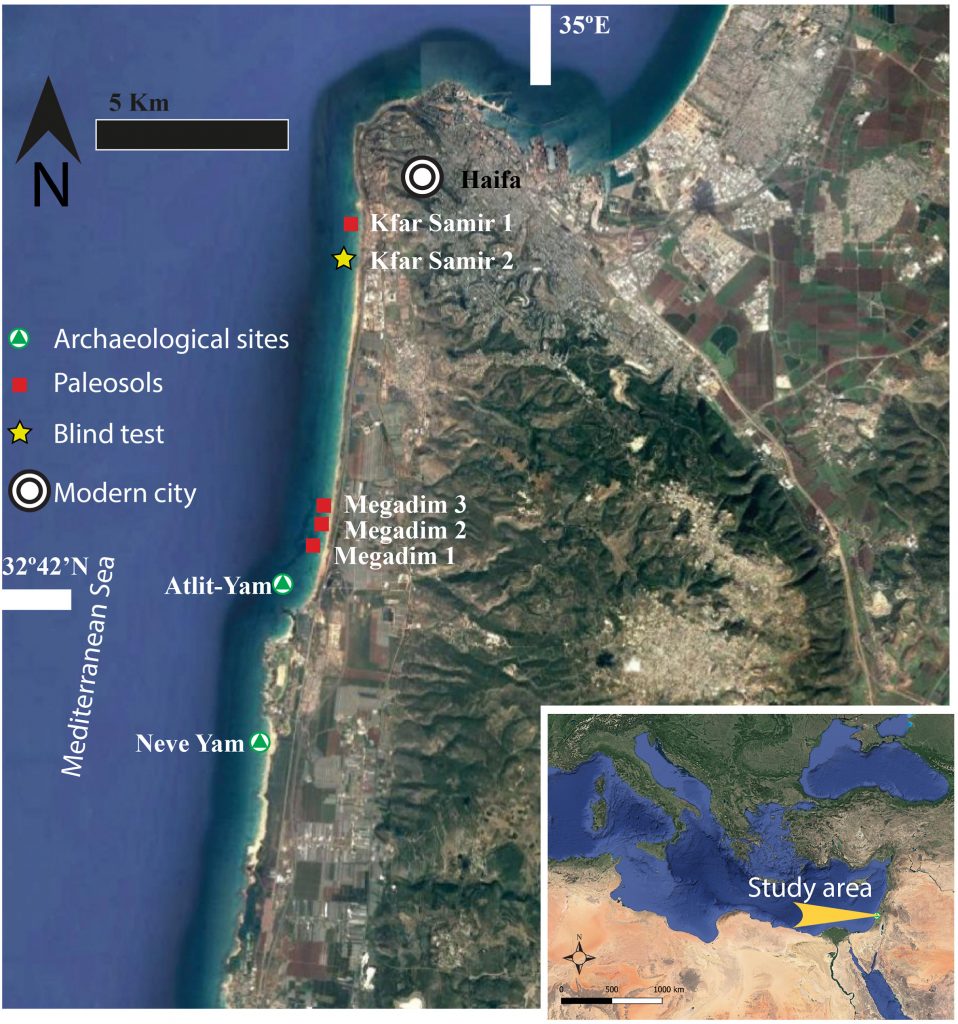A new paper by I.O. Ramirez, E. Galili, and R. Shahack-Gross titled “Locating submerged prehistoric settlements: A new underwater survey method using water-jet coring and micro-geoarchaeological techniques” just appeared on the Journal of Archaeological Science.
In the past few decades the field of submerged prehistory has produced important data highlighting ancient coastal habitation across the globe. Most prehistoric underwater sites are discovered by chance (e.g., by industry, fishermen or recreational divers). New methods for detecting submerged prehistoric settlements have been developed using sophisticated remote sensing devices, yet with limited success. Simple, practical, and inexpensive methods for locating submerged settlements remain rare. Over 60 years of underwater archaeology and submerged prehistory in Israel, specifically along the Carmel coast, has led to a model for locating and studying submerged settlements, based on sand removal by storms. This study aimed to take this model a step further by developing a new, inexpensive method to identify, locate and characterize submerged sites. We collected undisturbed paleosol cores from exposed areas as well as under a few meters of sand, using a newly developed water-jet core sampling system. The cores were analyzed using micro-geoarchaeological techniques initially developed on terrestrial sites. The rationale behind this methodology is based on established knowledge that where human settlements occur, sediments are enriched by specific mineralogical signatures and anthropogenic micro-remain assemblages. Additionally, micromorphology can assist in identifying micro-stratigraphic patterns typical of human settlements. We tested sediment cores in three underwater contexts: a) exposed prehistoric surfaces within two known Neolithic sites (Atlit-Yam and Neve Yam), b) exposed paleosols without visible archaeological remains (serving as a control), and c) as a blind test, a buried paleosol currently covered by 1–3 m of sand, where the existence of a site is unknown. In the cores taken from the exposed Neolithic settlements, the micro-geoarchaeological characterization showed clear anthropogenic signals (typical mineralogy, elevated micro-remain concentrations, micro-stratigraphy). In the paleosol control cores, there was an absence (or negligible presence) of anthropogenic signals. The ‘blind test’ at the sand-covered locality revealed sediments without anthropogenic enrichments (similar to the control paleosols), thus suggesting the absence of a submerged settlement in this specific location. The new method is time- and cost-effective and can easily be applied worldwide along the shallow continental shelf as well as in deep water. The new method will facilitate discovery of new underwater sites and provide selection criteria (e.g., where the highest anthropogenic signal exists) for investment in underwater excavations. Additionally, it can be used to check for anthropogenic signals in buried locations detected by remote sensing, and to understand the spatial organization of submerged sites.
Read the full paper here.


